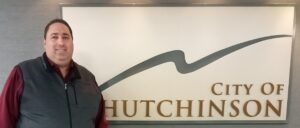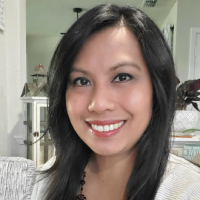
Code Professional Spotlight: Ismael “Izzy” Rivera
As a building official in Kansas, Ismael Rivera shares his blueprint for succeeding as a code professional
Ismael “Izzy” Rivera, Jr., CBO, CFM, Building Official for the City of Hutchinson, Kan., has forged an unconventional, yet highly successful, path through his building safety career.
Rivera grew up in the housing projects of Brooklyn, N.Y., and his family members were drawn to careers in either law enforcement or construction. Rivera explored both, even graduating from the police academy. However, due to health issues, he decided to take the architectural route and went to an architecture school to work towards his license.
“We weren’t taught about goals for the future,” recollected Rivera. “Most people [with a similar background] don’t get many opportunities; they feel trapped. My saving grace was that my parents and my grandmother encouraged my family to always better ourselves.”

Unfortunately, Rivera’s architectural and engineering clients through his first eight years of work were unable to provide verification of his experience to enable him to qualify for his licensure exams.
“At that point, it didn’t make sense for me [to go through more schooling] to take the test,” Rivera explained. “I came from being around family members who were in construction. Most architects are creative with their designs, and that’s what they want you to do in school. I am not able to do that; my brain is already wired for construction. So instead, I focused on the business of helping architects and engineers draft their designs and plans, expediting permitting and getting through the building department.”
Rivera established the aptly named R.A.P.I.D. Services, Inc., where he thrived in providing opportunities that he himself had struggled to find during his youth. Most of his employees were fresh graduates from architecture school who had difficulty finding a good job in New York without past work experience. It became a goal for Rivera to help them build up their resumes, as a sort of on-the-job training company. His employees stayed with him for a year or longer, appreciating the potential and flexibility of his unique business. One of them even went on to start his own similar business.
Pursuing Code Compliance and Enforcement in Texas
Seeking a new home away from New York, Rivera relocated to the City of Snyder, Texas. For about a year, he continued working remotely for R.A.P.I.D. Services, Inc., until a position opened as the city inspector/code enforcement officer for the City of Snyder in 2005.
“I thought they wouldn’t be interested in giving this role to a New Yorker,” Rivera laughed. “But my saving grace was that Jared Miller, the city manager, was new to the community. He saw my resume and called me in for an interview, then told me, ‘well, this is kind of below your experience level.’ But at that point in my life, I was looking for something more stable with good benefits, which can be hard to do when you’re self-employed.”
Rivera learned quickly that New York code compliance and enforcement was more restrictive than in Texas.
“I received a lot of pushback [from the building community in Texas] when I started more robust enforcement of codes and ordinances. It hadn’t been done before. But I worked to earn their respect, to help them understand why I was asking for compliance. I even helped tweak some ordinances to make them enforceable in a way they were used to, so long as it wasn’t violating codes or minimizing the safety of a project. When they recognized what I was doing, they started embracing some of my ideas, and there’s been much better communication and interaction between them and the city.”
Understanding Challenges of Both Design and Code Compliance
Rivera’s approach to compliance and enforcement is to see how projects can work within the necessary guidelines. The community may still not like it, he acknowledged, “But at least it wasn’t another hard ‘no’ to them. I say no, but it comes with options or an explanation. I was designing projects in New York and have received comments back from the city, so I’ve been on both sides of the fence and understand the challenges of trying to make a project work.”
His communication and negotiation skills were honed at the police academy, where Rivera developed a knack for speaking and empathizing with people. His empathy is genuine, he tends to visualize a family member being in the situation at hand and wanting to help.
Ultimately, his passion for people and relationships shines through. Rivera regularly thinks, “Who can I help today? Who can I meet again? If I make them happy, it makes me happy. Even the difficult ones, those are the best. I ask myself, what can I do to win them over, or at least, meet them halfway?”
Rivera worked for the City of Snyder for seven years, before moving on to serve as Chief Building Official for the City of Benbrook for six years, and then to the City of Amarillo for two years.
Benbrook was where he became more involved in the International Code Council, the International Association of Electrical Inspectors (IAEI) and other professional organizations. Rivera strives to understand more about the Code Council’s partnership with IAEI, a development that he and his colleagues are watching closely. As with model codes, Rivera believes strongly that understanding the intent behind the partnership will be crucial so building officials can better support it.
Emphasizing the Importance of Networking for Code Professionals
Being dedicated to chapter participation is a challenge for members from far-flung cities. Rivera recalled braving four-hour, one-way drives to the Dallas-Fort Worth area for three-hour evening meetings, then having to be back at work early the next day. He believes participation is very important, especially for those stationed far away with little in the way of a professional support system.
“Networking was important to me, and it still is to this day,” he emphasized. “In case I ran into issues, I learned how to address them ‘the Texas way,’ which is different from my experience coming from New York. I became familiar with what everybody was doing and we would brainstorm better solutions together. Most contractors work in all our cities, so it makes sense to be talking to each other, to interpret the code more consistently.”
Rivera counts fellow building officials Jim Olk (formerly with the City of Garland and who is also the mayor of the City of Lucas), Selso Mata (with the City of Plano) and Lawrence Crow (formerly with the City of Irving) among his mentors. He connected with each through organizations such as the Building Officials Association of Texas and the North Texas Chapter of the Code Council.
Rivera held several board positions, including President, within the North Texas Chapter of the Code Council. He also held several board of director posts within the Texas Chapter and Southern Section of IAEI, among other professional associations.
“These organizations are where I meet a lot of people and can seek guidance from leaders. I always try to surround myself with people like that – I love asking questions. That’s how I get better and learn.”
In turn, Rivera became a mentor to others who also went on to become building officials. “I was just being myself and didn’t really think much of it, but I realized how many people I was helping.”
Rivera accomplished much in his two years at Amarillo, including the mentorship of the next person in line for the position, Johnny Scholl, who he continues to communicate with today. Rivera moved on when he felt the timing was right to go back to a small city, which was always his preference.
With his son remaining in Amarillo, Rivera and his wife chose to move to the City of Hutchinson, Kan., where he now serves as Director of Building and Neighborhood Services and Building Official. Again, he is adapting to his new environment, an ability that has been key to his professional development. He’s attending regional monthly meetings, and at the same time, staying in touch with his Texas peers.
Enhanced Communication and Supporting Model Codes
The ability to work virtually has enhanced communication, not only for networking, but across the industry. Rivera finds the codes are being explained more consistently and it’s becoming easier to get the message out about what the codes mean and how to implement them.
“The codes are catching up with the industry. Three years is plenty of time between codes to catch up, and also gives the contractors time to adjust to the new ways,” he reflected. “But it’s still the building official who needs to use common sense. We have to remember that the code is the minimum. The intent behind it is what is important because the code can’t cover everything. You have the authority to interpret that intent and make it work for your situation or your city.”
In addition to enhanced communication, Rivera loves technology’s efficient ability to share knowledge. He recognizes how fast and differently people learn today and says video channels such as YouTube are very helpful in encouraging others to learn. “Many people don’t read anymore, but they’ll watch YouTube,” he joked.
To him, it’s all about the next step up. “I congratulate people for where they’re at, then I like to push people to go further if it’s possible. I say, that’s great you made journeyman, maybe next you can think about becoming a master. Maybe you’re a designer; I want to see you become an architect or an engineer.”
“As a building official, I get to be involved in everything. I’m not just in one part of the project, I get to experience the whole thing. That’s what I like, I get to see it from beginning to end, from the design concept all the way to the finish.”
His genuine humility makes Rivera a wonderful mentor for so many. Even if his path didn’t follow his original plans, he’s had an amazing career and a life fulfilled by helping everyone around him.
The Code Council offers mentorship opportunities through our Safety 2.0 program to building safety professionals who are early in their careers. For more information, visit the Safety 2.0 webpage.








